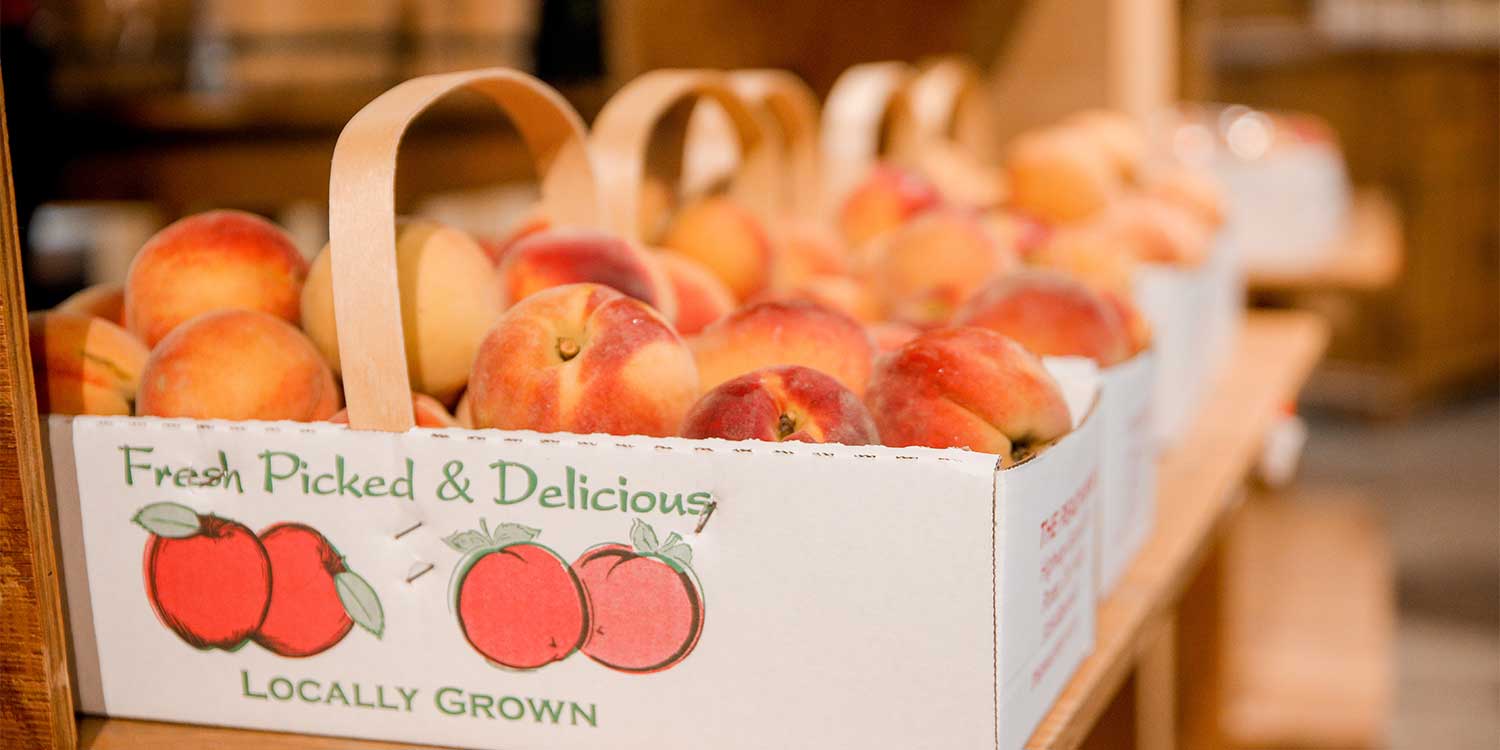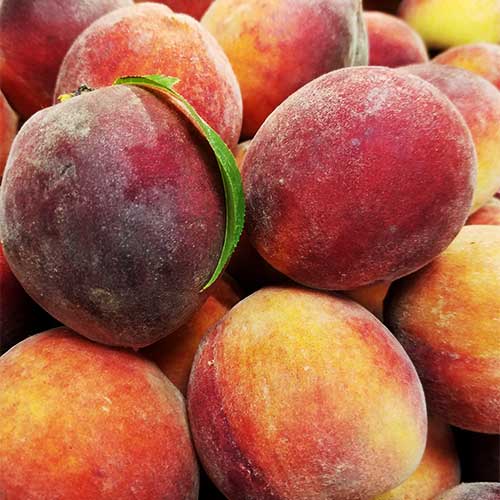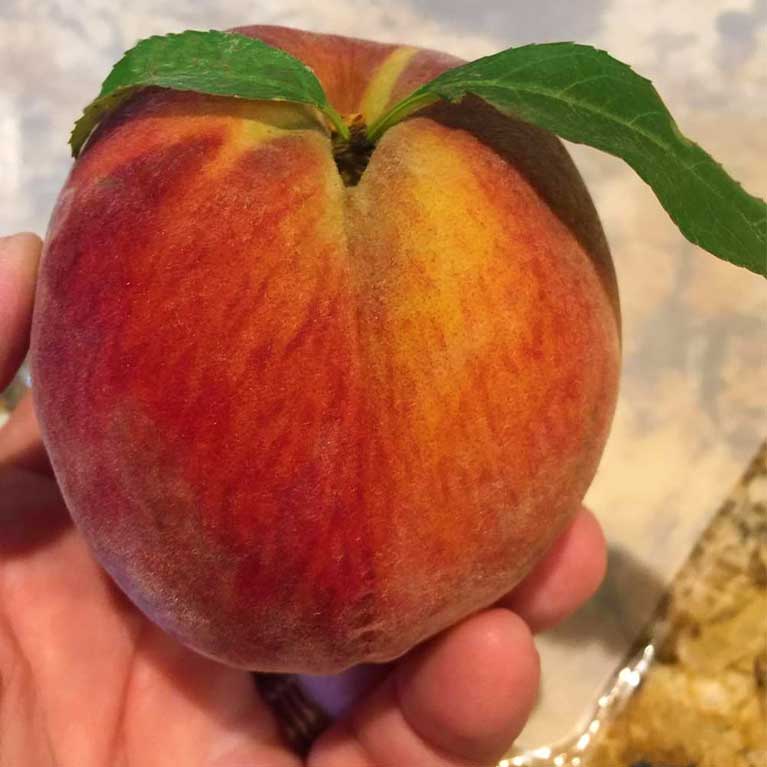
Information About Our Peaches
Peach Variations
Color
Peaches come in two varieties of color. These distinctions help us determine how the peach will taste.
Yellow Flesh
Peaches tend to have more acid content – flavor many associate with peaches
White Flesh
Peaches tend to have a lower acidity, giving it a mild to sweet flavor

Types of Stone
Freestone
Freestone Peaches have a flesh that does not stick to the stone (pit) so slicing the peach or eating the peach without slicing is much easier. They are also great for baking and preserving. Our freestone peaches are typically in season from early July through early October with the peak of the season being mid-July through mid-August.
Semi-Freestone
Semi-Freestone Peaches have a flesh that comes somewhat away from the stone. We start our peach season with these and suggest they be used for fresh eating while waiting for the freestone peaches to ripen which are easier for slicing. These are typically in season from mid-June through early July.
Clingstone
Clingstone Peaches have flesh that clings to the stone. We do not grow any clingstone peaches.
Selecting and Storing Peaches
Tips for Selecting Peaches:
Peaches should be soft to the touch (tree ripe) but not mushy. Handle peaches gently, not squeezing or dropping them as they bruise easily.
We sell different ‘grades’ of peaches.
#1’s are our best peaches – almost perfect peaches.
#2’s are peaches with small defects (such as a limb rub or hail damage) or are mis-shapened which will only effect the skin so the defect can be peeled away.
A Few More Selection Tips:
- Over-ripe peaches are peaches that have been bruised during the harvest or grading process. They are best for baking not eating fresh since part of the peach will be bruised and part is still firm.
- Look for a creamy gold to yellow under color. The red or “blush” of a peach is an indication of the variety, not the ripeness.
- Place firm peaches on the counter in a single layer at room temperature and they will ripen within a few days. To ripen quicker, place peaches in a paper bag with an apple or banana which release natural ethylene gas.
- Promptly refrigerate ripe peaches and eat them within a week of purchase
Conversion Charts for Purchasing
One pound of peaches:
=3 medium peaches
=2 cups sliced peaches
=1 ½ cups peach puree
2 medium to large peaches = 1 cup sliced peaches
1 bushel peaches = 18 to 24 quarts canned or 32 to 48 pints frozen
2 to 2.5 lbs. = 2 pints frozen
Preparing Peaches
As with many fruit the process of peeling the skin can be the most difficult part of the preparation process. Use our Peach Pro tips to help you speed up the peeling process!
Easy Peel Technique For Peaches
- Bring a pot of water to boil.
- Lightly score an X with a paring knife on the
bottom of each peach. - Place 3 to 4 peaches into the water for about 1 minute ( 1-2 minutes if peaches are firm). Do not leave them in water too long as they will be mushy.
- Remove peaches with a slotted spoon and place them in cold water or ice water for 1-2 minutes.
- Remove peaches from water.
- Starting at the X, use the paring knife to pull the peach skin away from the flesh or just use your fingers to pull the skin.

Freezing Peaches
Unfortunately, Peach season comes only once a year. So for us peach lovers learning how to stretch the life of our peaches is very important. Follow our Peach Pro Tips below to enjoy your peaches into the holiday season!
Freezing Peach Slices
- Peel and slice peaches.
- Treat them with a preservative to keep them from darkening.
- Place in a plastic freezer bag only filling to about ¾ full.
- Remove all air and freeze. They can also be frozen with sugar added or without depending on the intended use once thawed. The peaches can also be cooked as pie filling and then frozen, making winter pies a snap!
Whole Peach Freezing
- Place whole peaches in a plastic freezer bag.
(no treatment needed) - Pull peaches from freezer as needed.
- Let thaw at room temperature until almost all ice has melted but some remains. The peach will be a little crunchy but if you let it completely thaw, it will be mushy.
